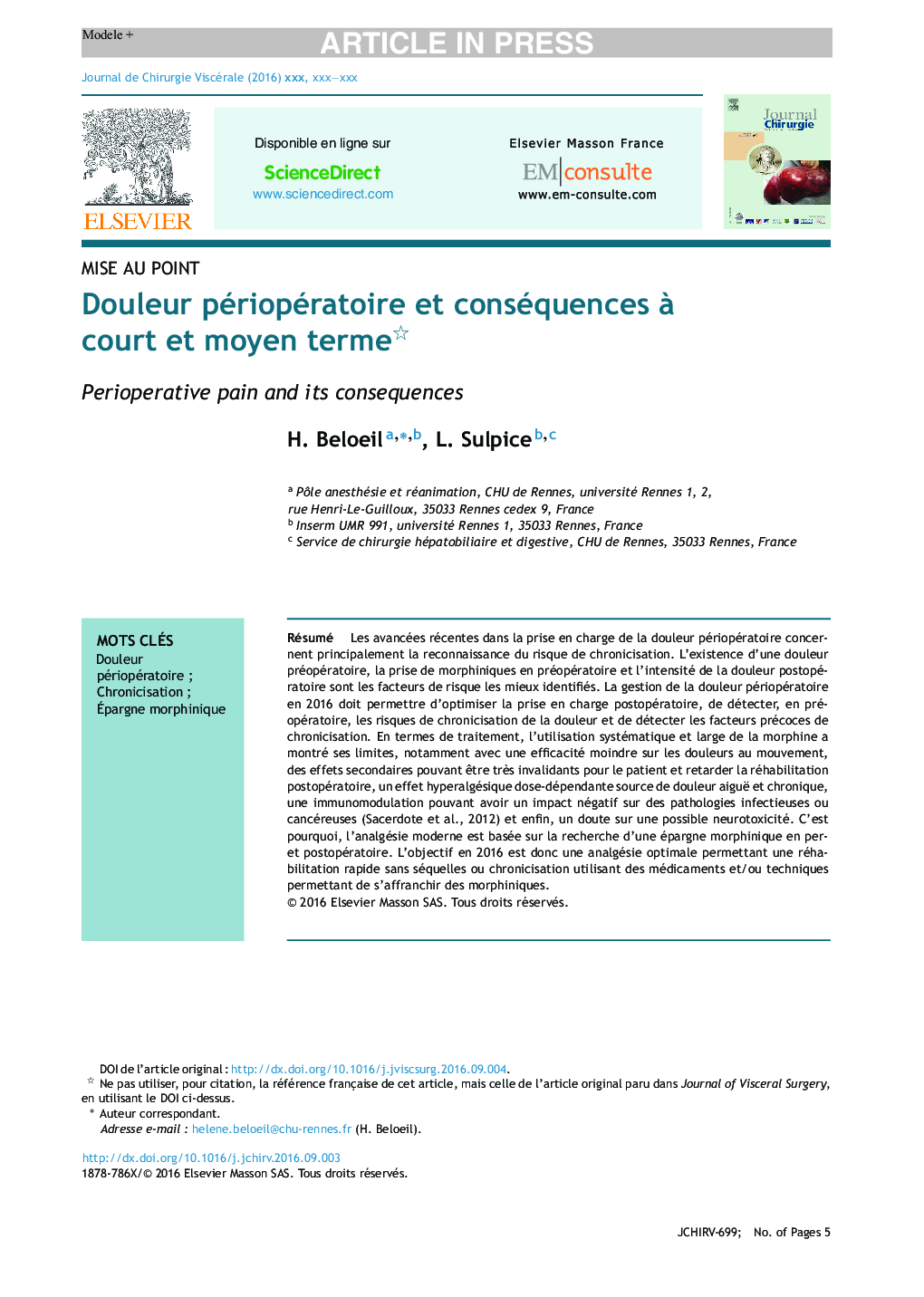| Article ID | Journal | Published Year | Pages | File Type |
|---|---|---|---|---|
| 5660254 | Journal de Chirurgie Viscérale | 2016 | 5 Pages |
Abstract
Recent advances in the management of perioperative pain principally concern the recognition of the risk of developing pain chronicity. The best identified risk factors for pain chronicity are the presence of pain preoperatively, preoperative opioid use, and the intensity of postoperative pain. Ideal management of perioperative pain in 2016 aims to optimize postoperative pain management, to detect the risk of pain chronicity begins preoperatively with early detection of risk factors for chronicity. In terms of treatment, the systematic and generous use of morphine has shown its limitations, particularly due to reduced efficacy for movement-related pain. Meanwhile, opioid side effects can be very debilitating for the patient, leading to delay in postoperative rehabilitation, a dose-dependent hyperalgesic effect resulting in both acute and chronic pain, immune modulation that may have a deleterious impact on infectious complications or cancer (Sacerdote et al., 2012), and, finally, some question of possible neurotoxicity. Therefore, modern analgesia depends on both intraoperative and postoperative morphine sparing. The goal at the present time is to obtain optimal analgesia that allows rapid rehabilitation without sequelae or chronicity through the use of drugs and/or techniques to avoid the need for opioid medications.
Keywords
Related Topics
Health Sciences
Medicine and Dentistry
Gastroenterology
Authors
H. Beloeil, L. Sulpice,
